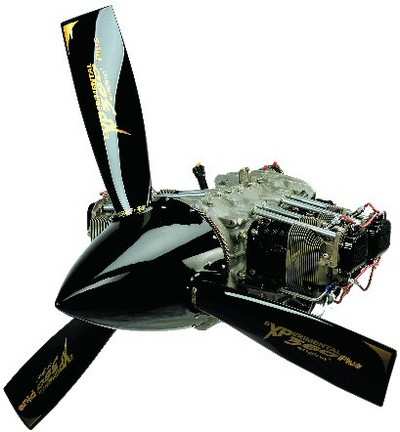Sat, Dec 12, 2020
AD 2020-25-12 Prompted By Three Crankshaft Assembly Failures That Resulted In The Loss Of Engine Power
The FAA is adopting a new airworthiness directive (AD) for all Superior Air Parts, Inc. (SAP) Model IO-360-series and O-360-series reciprocating engines and certain Lycoming Engines (Lycoming) Model AEIO-360-, IO-360-, and O-360-series reciprocating engines with a certain SAP crankshaft assembly installed.

This SAP crankshaft assembly is installed as original equipment on the affected SAP engines and as a replacement part under parts manufacturer approval (PMA) on the affected Lycoming engines. This AD was prompted by three crankshaft assembly failures that resulted in the loss of engine power and immediate or emergency landings. This AD requires the removal from service of all affected crankshaft assemblies. The FAA is issuing this AD to address the unsafe condition on these products. This AD is effective January 15, 2021.
Supplementary Information: The FAA issued a notice of proposed rulemaking (NPRM) to amend 14 CFR part 39 by adding an AD that would apply to all SAP Model IO-360-series and O-360-series reciprocating engines and certain Lycoming Model AEIO-360-, IO-360-, and O-360-series reciprocating engines with a certain SAP crankshaft assembly installed. The NPRM published in the Federal Register on January 29, 2020 (85 FR 5173). The NPRM was prompted by three crankshaft assembly failures that resulted in the loss of engine power and immediate or emergency landings. The FAA determined that the crankshaft assembly failures resulted from the manufacturing process at SAP's crankshaft vendor during 2012 and 2014 causing excessive residual white layer of iron nitride forming on the assemblies. This white layer is brittle and can lead to spalling or fatigue cracking of the crankshaft assembly as a result of the normal mechanical loads during engine operation. The FAA's analysis concluded that all three SAP crankshaft
assembly failures were the result of this fatigue cracking. In the NPRM, the FAA proposed to require the removal from service of all affected crankshaft assemblies. The unsafe condition, if not addressed, could result in failure of the engine, in-flight shutdown, and loss of the airplane.
More News
Airplane Bounced About 3 Ft Then Touched Back Down And Then, With No Brakes Applied, The Airplane Began Veering To The Left Analysis: The pilot entered the airport traffic pattern >[...]
Aero Linx: British Microlight Aircraft Association (BMAA) The primary focus within all aviation activity is SAFETY. In all aspects of our sport SAFETY must come first, whether it b>[...]
From SnF25 (YouTube Edition): William Wynne Builds Practical Aircraft Engines on the Corvair Platform Seeking an affordable alternative to the traditional aircraft engine options, >[...]
How To Get A Story On Aero-TV News/Feature Programming How do I submit a story idea or lead to Aero-TV? If you would like to submit a story idea or lead, please contact Jim Campbel>[...]
From 2023 (YouTube Edition): Bridge of CiES CiES Inc. is a Bend, Oregon-based designer and manufacturer of modular embedded aircraft systems and sensors. The company’s fuel-l>[...]
 NTSB Final Report: Aviat A1
NTSB Final Report: Aviat A1 ANN's Daily Aero-Linx (07.08.25)
ANN's Daily Aero-Linx (07.08.25) Classic Aero-TV: Fly Corvairs Reliable Engine Alternative
Classic Aero-TV: Fly Corvairs Reliable Engine Alternative ANN FAQ: Contributing To Aero-TV
ANN FAQ: Contributing To Aero-TV Classic Aero-TV: CiES Fuel-Quantity and e-Throttle Systems Praised
Classic Aero-TV: CiES Fuel-Quantity and e-Throttle Systems Praised



